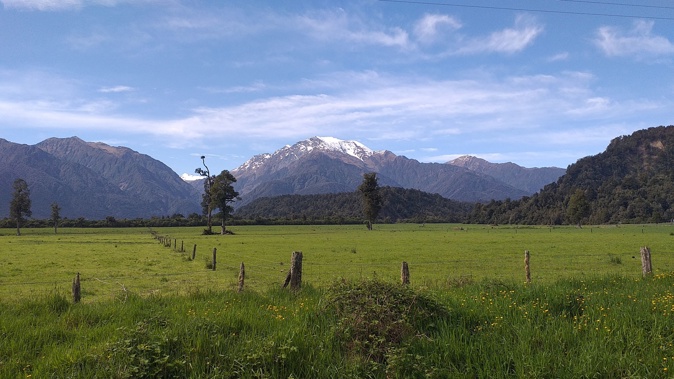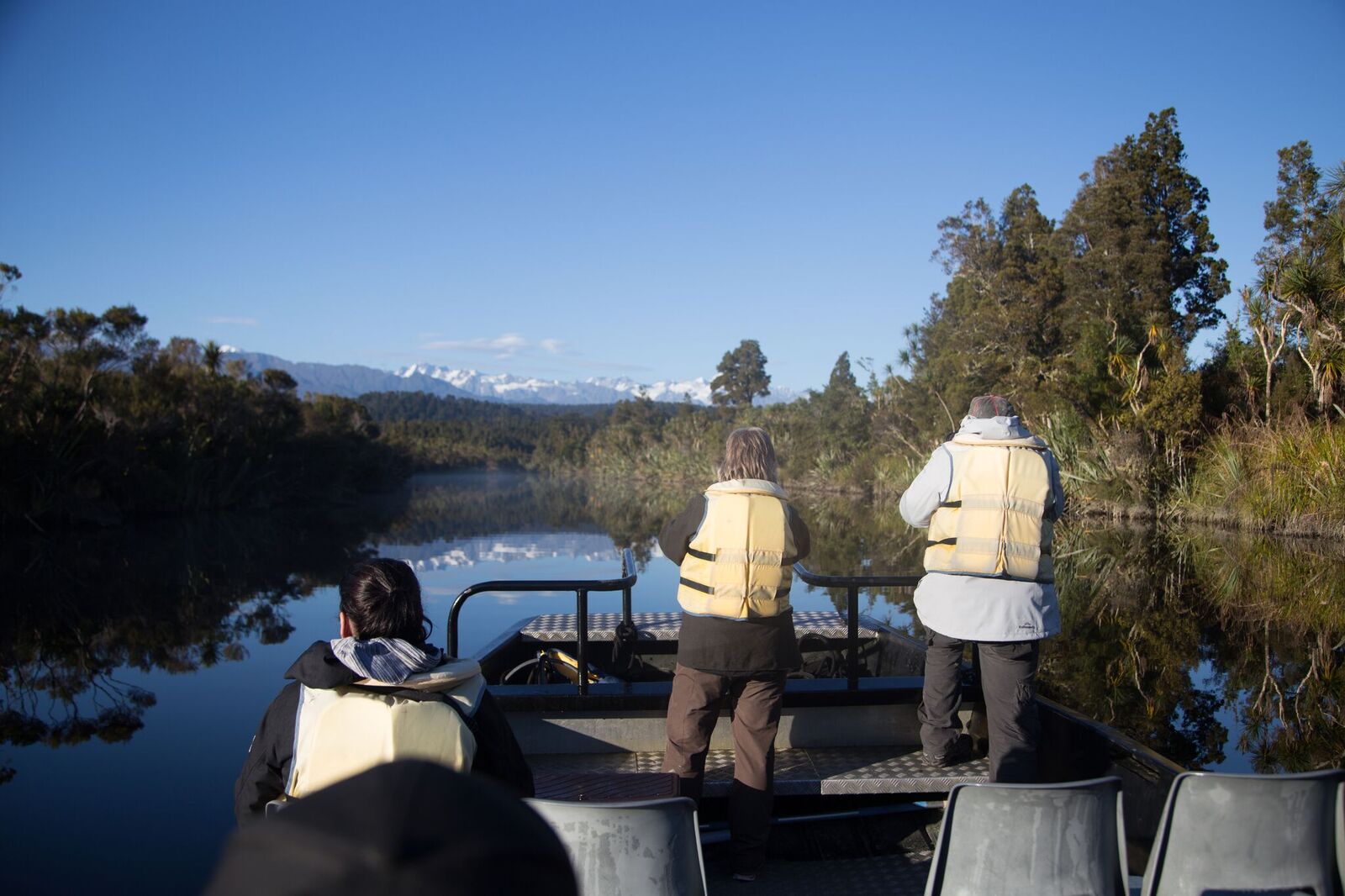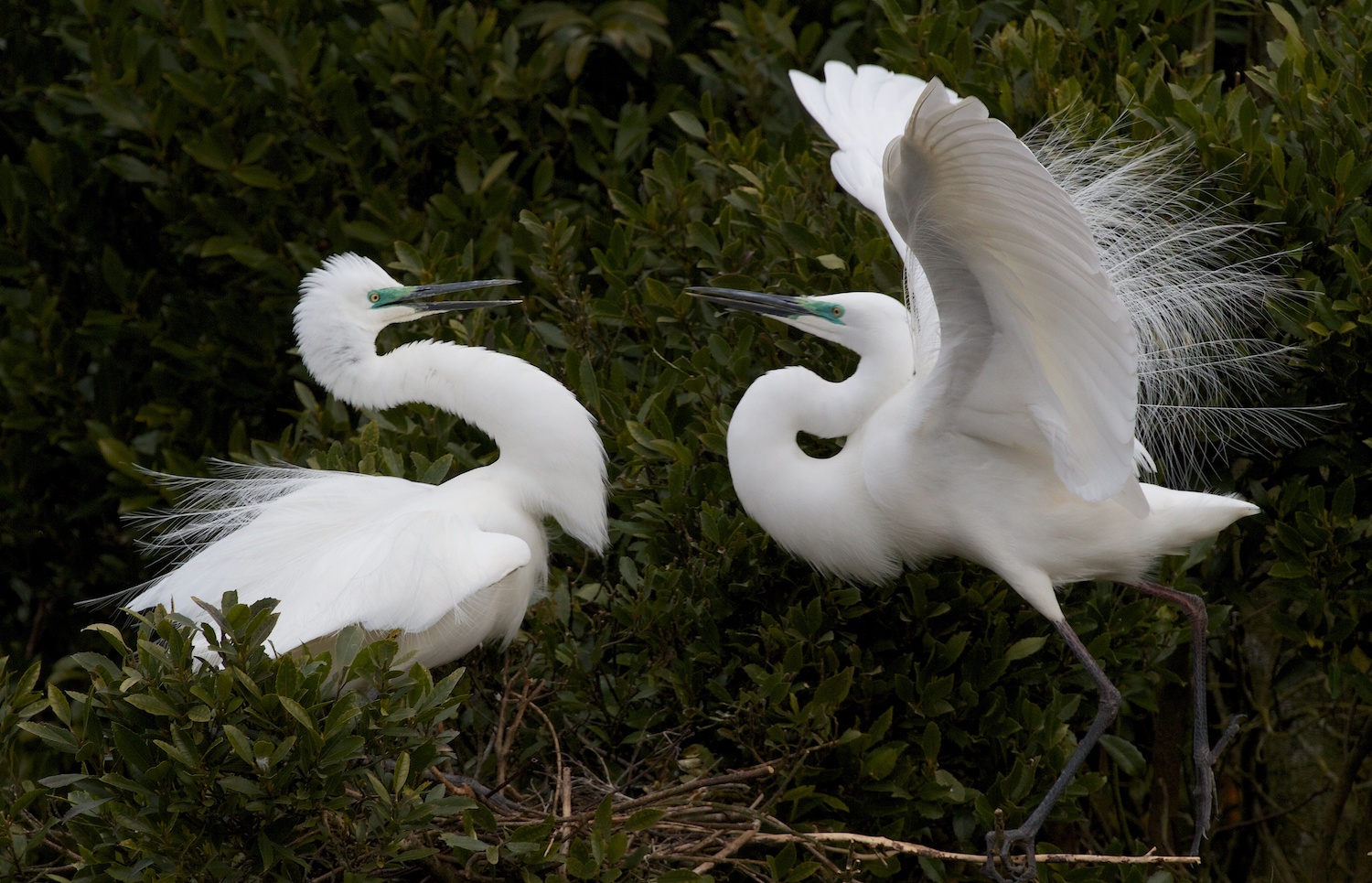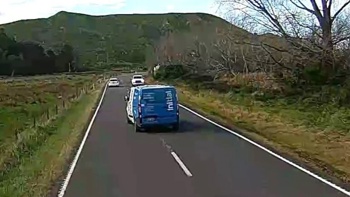
Heading south from Hokitika on the forest and fern-fringed State Highway 6, South Westland’s natural splendour seems to grow in awe-inspiring intensity the further south you go. There’s a fairytale quality to the sense of escapism, as you drive through those long and leafy highway glades, where the forest canopy drapes across the road. There’s insta-gold at every turn. I wended my way to Whataroa, where nesting is the star attraction. Just out of Whataroa, the rare white heron (kotoku) nest at the Waitangiroto Nature Reserve from September to March. You can only access the reserve on a guided tour with White Heron Sanctuary Tours, which I eagerly jumped at, departing from Whataroa’s main street. For 33 years the Arnold family have been enthralling visitors, after having the vision to care for and share this world class attraction. They have the exclusive DOC concession to the site and are sticklers for keeping access to the sanctuary, the boardwalks and purpose-built viewing hide in top-notch condition.
Dion Arnold led our tour group, a naturally charming host with a typical jocular and self-effacing West Coast demeanour, keeping us engrossed with a stream of anecdotes and insights, underscoring his abiding passion for accessible conservation. It's presumed the first White Herons were windblown across the Tasman Sea from Australia, several hundred years ago. But just why the White Herons have only one nesting site in New Zealand and why it’s in this far-flung pocket of South Westland, remains one of nature’s great secrets. Their Australian brethren prefer far warmer climes. The sanctuary’s glorious boardwalk leads you through the spell-binding beauty of a primeval Kahikatea-dominated forest, studded with a supporting cast of native tree and plant species. It’s one of the largest kahitakea reserves in the country, with many of the trees After admiring the forest finery, the first viewing point enchanted us with the spectacle with some of the other sanctuary residents – the Royal Spoonbill and the Little Shag. It was all aflutter.

Five minutes later, we arrived at the double decker viewing hide for the star attraction. Across the water, the verdant rainforest appeared to be laden with big fluffy snow-white balls of candy floss. Kia ora, kotuku. When I visited in late October, there were no fewer than 43 breeding pairs on their nests and some chicks had already been born. The season was off to a roaring start. It was a hive of activity, with the Dads fluttering around and fossicking for sticks and twigs to fortify the nest. On return to the expectant mother, laden with building materials, a great flurry of excitement and celebration ensued. They’re so theatrical, so regal and natural born posers. They’re also incredibly delicate, even dainty, like snow white ballerinas in full performance mode.
It was absolutely transfixing to watch from the viewing hide, where you’re about 20 metres away from the birds. Over the autumn and winter months they disperse widely throughout New Zealand and are generally seen as a solitary bird, so definitely plan a summer stop here. Dion imparted a wealth of fascinating insights about the kotuku, which adorns our $2 coin. Their courtship displays are very elaborate whereby males build small platforms from which they advertise themselves to females. The male spectacularly raises his nuptial plumes, with the neck erect, the bill snapping and the wing feathers flicking. Once a female is attracted, the pair preen each other and intertwine their long S-shaped necks, wings and bill. Because of its rarity in New Zealand and its beautiful plumage, the kotuku was highly valued by Māori and European settlers for its ornamental feathers.
By the 1930s, their feathers had become a major fashion statement in women’s hats. The species was almost exterminated to satisfy the demand after its only breeding site on the Waitangiroto River was discovered in 1865 by the surveyor, Gerhard Mueller. By 1941 there were only four nests. Thankfully today, the population has stabilised with around 140 kotuku in New Zealand. In Maori folklore to see one of these birds just once in a lifetime was believed to be good fortune and to liken someone to a kotuku was paying them a great compliment. Treat yourself to a tour with the Arnolds. www.whiteherontours.co.nz

Nature’s nurturing power is the greatest balm to recharge the batteries from the bustle of the daily grind, which probably explains by Okarito is swooned over by those in the know, as a coastal haven for languid, eco-rich getaways. It might well be one of New Zealand’s last truly innocent, special places. Just 25 minutes south from Whataroa, this irresistibly laidback hamlet feels like a world unto itself. No wonder there’s such a glint in the eye, a ready smile and a warm welcome when you meet the locals. With a permanent population of around 30 residents, close-knit, community-minded and hyper-friendly are all bywords for Okarito. To reach this coastal charmer, you turn off the main West Coast highway just south of Whataroa, for the final 16km charge to the coast, which threads through majestic rainforest, slashed by the pristine Okarito River. On arrival, you’re rewarded with stunning panoramic views of the towering jaws of the Southern Alps, the roar of the ocean, the magnificent lagoon, striking sea cliffs and vast, lush forest in this heart-stealing eco-wonderland.
The old wharf does a fine job honouring the village’s heroic legacy as a gold mining boom town, with stirring displays and interpretation panels. I was particular struck by the panels showcasing the blue whale that washed up on the beach in 1908. It’s skeleton is now in safe-keeping at Canterbury Museum, after a tour de force to transport this ocean giant across the Alps. I strolled the village with the delightful Paula Sheridan, who along with her husband Swade, operates Okarito Boat Ecotours and manages many of the holiday homes. Okarito could not wish for more passionate, compelling and exuberant exponents of their village and natural riches. In 1865 the goldmining township of Okarito sprang up as the port town to service the nearby goldfields, despite the formidable challenges of the shifting entrance channel from the ocean.
Like so many West Coast towns, it never ceases to amaze me how frenetic the throb of activity must have been in places like this, at the height of the gold boom, humming with humanity, commerce and a very raucous hospitality scene. The photos and art on display vividly capture the goldrush era. By 1866, more than 50 hotels and merchant stores and a BNZ supported the 2500-strong population. A year later, that had plummeted to just 600 residents as the prospecting fever shifted further north. There are some sigh-inducing cottages and buildings still standing in Okarito that reach back to the boom – none more so than Donovan’s Store, on The Strand. It’s the oldest wooden building on the Coast, beginning life as The Club Hotel in 1865. Converted into a general store in the 1890s, it was run by James Donovan and his wife Eva for about 60 years.
After a fabulous restoration, the building now serves as a community venue and library, hosting all manner of events – old digs for great gigs. This wonderful window on Okarito’s rich past is a must-see. The village is understandably a tractor-beam for creative types, headlined by one of New Zealand’s most accomplished landscape photographers, Andris Apse. His glamour-pad home and gallery is a delight to visit and you’ll be thrilled to meet this incredibly humble, engaging chap. Another resident luminary, who recently departed, is Keri Hulme. She relocated to North Otago three years ago, and 35,000 books were packed up by the house movers. But the piece de resistance is unquestionably Okarito Lagoon, New Zealand’s largest unmodified wetland.
With both saltwater and freshwater flora and fauna. This sprawling estuarial lagoon teems with birdlife and is best experienced on an ecotour with Paula and Swade. Their purpose-built flat-bottom boat reminded me of zipping through the shallows of the Everglades and they’ll kit you out with rugs and binoculars to enhance the twitching experience. They operate a variety of tours but the early bird tour, in the first light of day is the best time of day to see so many of the 70 bird species feeding in the lagoon, while the tall limbs of the lustrous rainforest plays mirror mirror on the wall, in the calm lagoon water. It’s a head-blasting breakfast spectacle. The vast menagerie of birds is eye-popping, from royal spoonbills, godwits, terns and oystercatchers to pied stilts, Caspian terns, paradise ducks…and best of all, the great white heron.
They may nest in summer further north at Waitangiroto, but the lagoon is their main feeding ground for the kotuku. It's also the permanent home for some of the population, after they’ve left the nest, so you’ll see them year-round on Okarito Lagoon, including the bird they’ve nicknamed “Heronius.” Paula and Swade can also get you sorted with a holiday home to hire, whether it’s for a night or a month. I stayed right next door to Keri Hulme’s old house (feeling exhausted for those house movers and that library of books), at Pukeko Landing, with soul-stirring views out to the ocean, with a pohutukawa tree abuzz with tui outside the lounge. Okarito takes you to another realm of solitude, wedged between the mighty Southern Alps and the Tasman Sea, where a deep reverence for the wondrous ecosystem is embedded in the village DNA. With a clutch of wonderfully warm and earthy-type residents, it’s a place that will sweep you up into its spell-binding clasp. www.okaritoboattours.co.nz
Finally, if you want to add a whiff of geology and future disaster tourism into your itinerary, from Whataroa, why not take an Alpine Fault Tour? It’s actually very informative, with gripping 3D animation modelling produced by GNS, vividly illustrating the collision of the plates. Then you’ll be taken to Gaunt Creek, where you can see and touch the paper-thin boundary of two massive tectonic plates! Shove your finger in the crack, and you can touch them. It’s pretty gobsmacking to consider that every 300 years or so, the whole Pacific Plate moves up by four metres and horizontally, by eight metres. Bookings are essential. www.alpinefaulttours.co.nz
For more regional touring tips in this sublime and untamed pocket of New Zealand, head to www.westcoast.co.nz
Mike Yardley is our resident traveller on Jack Tame Saturday Mornings.
Take your Radio, Podcasts and Music with you









